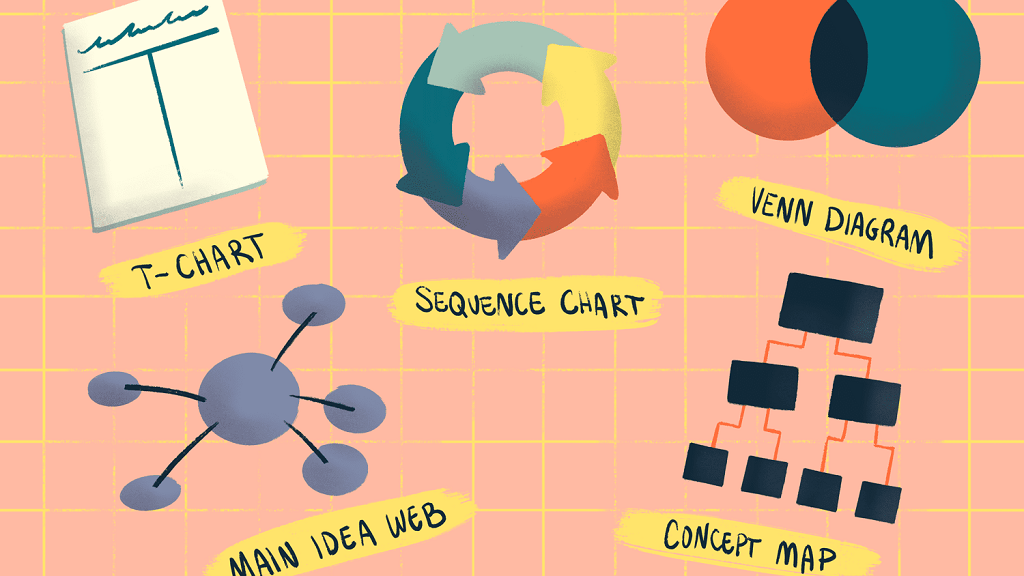
Why are graphic organizers important?
They are non-linguistic visual tools that allow students to connect new information to their knowledge, discover how concepts relate and integrate, and easily remember information. Graphic organizers become a way of representing knowledge. They are necessary for the teaching-learning process. Why are graphic organizers important?
When it comes to distance and virtual education, due to the structural dynamics of the modality. The influence of autonomous and independent learning, where students have to search. They must provide strategies and techniques so that learning and encountering knowledge while making its production more accessible.
Why are graphic organizers important?
- They help focus on what is important, because they highlight key concepts and vocabulary, and the relationships between them, thus providing tools for the development of critical and creative thinking.
- They help to integrate previous knowledge with a new one.
- They motivate conceptual development.
- They enrich reading, writing, and thinking.
- They promote cooperative learning. Learning is first social. Only after working with others does the student gain the ability to understand and apply to learn independently.
- They are supported by selection and ranking criteria, helping learners to “learn to think.”
- They help understanding, remembrance, and learning.
- The process of creating, discussing, and evaluating a graphic organizer is more important than the organizer itself.
- They promote learning through active investigation.
- They allow learners to participate in learning activities that take into account the zone of proximal development, which is the area where they can function effectively in the learning process.
Concept maps:
They constitute one more pedagogical strategy in the construction of knowledge. They will be very useful for students, as a study method for subsequent evaluations, and we can use them in class to explain. Through this tool, information is characterized, hierarchized, and related at a general or global level, and propositions are formed through the system of links with connectors.
Conceptual Schemes:
Information is characterized, hierarchical and related, using detailed descriptions and brief explanations. To make a conceptual scheme, we start from the conceptual map and include descriptions, details, and characterizations.
Thematic Maps:
It is a variation of a conceptual map developed from a particular theme, and only its components are enunciated. They are very useful to introduce the student to a certain topic, therefore, we can use them at the beginning of a unit or chapter; In this way, the student, before knowing the contents, will have a general approach to the topics that will be discussed during the said unit. However, it is important to recognize that they will be limited to the graphic description of the general themes, and will not establish relationships as dynamic as those suggested in the concept maps, thanks to the systems of propositions, through connectors.
Mind maps:
Mind maps are graphic representations of an idea or topic, and its associations with keywords, in an organized, systematic, structured, and radial manner. Mind maps as a tool allow: “the memorization, organization, and representation of information, to facilitate learning, administration and organizational planning processes, as well as decision-making.
Conceptual minds:
They serve to represent concepts, they are called conceptual minds. It is important to note that corresponds to a higher level of the already explained concept maps. The pedagogical potential lies in two fundamental elements: extract the fundamental ideas, and visually rewrite the main verbal ideas obtained.
Synoptic Table:
They present a characterization of topics and subtopics, hierarchically organizing the information in a diagram, using the system of keys or utilizing tables. Synoptic tables are Graphic Organizers, which have been widely used as instructional resources and are defined as visual representations that communicate the logical structure of educational material.
Cobwebs:
Cobwebs are graphic organizers that show how some categories of information are related to their subcategories. Provides a structure for ideas and/or facts, crafted in a way that helps students learn how to organize and prioritize information. They are very useful when brainstorming is required. They serve to organize information, before starting writing and are often used to illustrate stories and characterizations.
You may also know like to read, 5 tips on graphic design and infographics

Sorry, the comment form is closed at this time.